-
 bitcoin
bitcoin $122288.232522 USD
0.16% -
 ethereum
ethereum $4480.662914 USD
-0.22% -
 xrp
xrp $2.962747 USD
-2.32% -
 tether
tether $1.000120 USD
-0.05% -
 bnb
bnb $1145.654223 USD
-2.07% -
 solana
solana $227.105217 USD
-1.67% -
 usd-coin
usd-coin $0.999548 USD
-0.02% -
 dogecoin
dogecoin $0.250875 USD
-2.04% -
 tron
tron $0.340654 USD
-0.49% -
 cardano
cardano $0.837968 USD
-2.52% -
 hyperliquid
hyperliquid $48.960449 USD
0.06% -
 chainlink
chainlink $22.049280 USD
-1.33% -
 ethena-usde
ethena-usde $1.000404 USD
0.02% -
 sui
sui $3.586212 USD
0.20% -
 avalanche
avalanche $29.894916 USD
-4.18%
What are token permissions and how to manage them in MetaMask?
Token allowances in MetaMask let dApps spend your tokens, but unchecked permissions can risk your funds—regularly audit and revoke unused approvals for security.
Oct 03, 2025 at 09:36 pm
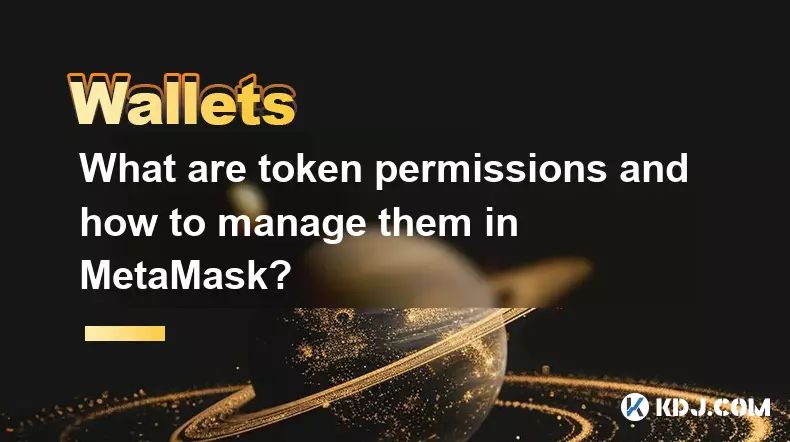
Understanding Token Permissions in MetaMask
1. Token permissions, often referred to as token allowances, define how much access a decentralized application (dApp) has to your cryptocurrency tokens stored in your MetaMask wallet. When you interact with platforms such as decentralized exchanges or lending protocols, they may request permission to spend a certain amount of your tokens on your behalf. This mechanism is built into the ERC-20 standard and allows smart contracts to transfer tokens without requiring manual approval for every transaction.
2. These permissions are critical for user experience, enabling features like automated yield farming, staking, and swaps. However, they also pose potential security risks. If a malicious or compromised contract holds high allowances, it could drain your wallet over time. Users often overlook these settings after initial setup, leaving unnecessary access open long after its usefulness has expired.
3. Each allowance is tied to a specific token and smart contract address. For example, granting an allowance to Uniswap’s router contract for DAI does not affect your USDC balance or any other dApp. The permission remains active until manually revoked or overwritten by another approval transaction.
4. Unlike wallet balances, token allowances are not visible by default in the MetaMask interface. Users must navigate to advanced settings or use third-party tools to view current approvals. This lack of visibility can lead to oversight, making regular audits of token permissions essential for maintaining control over digital assets.
5. Smart contracts cannot withdraw more than the approved amount unless you explicitly increase the allowance. Some users mitigate risk by setting low, finite limits rather than approving infinite spending. While this adds safety, it may require repeated approvals when engaging frequently with a service.
How to Check Active Token Approvals
1. Open MetaMask and connect to the Ethereum network or the relevant EVM-compatible chain where the token resides. Navigate to the 'Assets' tab and locate the token you want to audit. Although MetaMask doesn’t display allowances directly, external tools are necessary for full visibility.
2. Visit trusted blockchain explorers such as Etherscan or specialized platforms like revoke.cash or DeBank. These services allow you to input your wallet address and view all active token approvals linked to your account.
3. On Etherscan, go to the 'Token Approvals' section under your address. It lists every contract that has been granted spending rights, along with the approved amount and expiration status. Contracts labeled as unknown or from unfamiliar projects should be scrutinized carefully.
4. Review each entry based on usage frequency and trust level. Long-dormant approvals for defunct dApps should be prioritized for revocation. Pay special attention to infinite allowances, which represent the highest risk if exploited.
5. Keep a personal log of recent dApp interactions to cross-reference with the approval list. This helps distinguish between legitimate ongoing services and outdated or forgotten permissions.
Steps to Revoke or Modify Token Allowances
1. Use a dedicated revocation platform such as revoke.cash. Connect your MetaMask wallet to the site and allow it to scan your active approvals. The interface will display a clean list of contracts with their respective token allowances.
2. Locate the specific contract and token pair you wish to revoke. Click the 'Revoke' button next to the entry. This triggers a blockchain transaction that sets the allowance back to zero, effectively cutting off the contract’s access to your funds.
3. Confirm the transaction in MetaMask. A small gas fee will be charged, depending on network congestion. Once confirmed, the contract can no longer initiate transfers of that token from your wallet.
4. To modify an existing allowance instead of fully revoking it, you must send a new approval transaction. Return to the dApp interface or use a tool like Remix or MyEtherWallet to manually set a lower limit. This replaces the previous value.
5. After revoking or adjusting permissions, recheck your status on Etherscan or revoke.cash to confirm the update. Regular maintenance ensures only necessary contracts retain access, reducing attack surface significantly.
Frequently Asked Questions
What happens if I revoke a token permission for a dApp I still use?You may need to re-approve the token when performing actions like swapping or depositing. Revoking doesn't break functionality permanently—it simply requires a fresh approval, enhancing control over when and how access is granted.
Can a dApp steal my tokens if I’ve approved it?A dApp cannot withdraw more than the approved amount without triggering another approval request. However, if the contract is malicious or hacked, it can use the existing allowance to transfer up to the permitted balance. This is why limiting approvals is a recommended security practice.
Do token approvals expire automatically?No, token allowances do not expire unless coded with a time limit within the contract itself. Most standard ERC-20 approvals remain active indefinitely until revoked by the user through a separate transaction.
Is it safe to approve infinite allowances on well-known platforms?While major platforms like Aave or Uniswap are generally trustworthy, infinite approvals still carry inherent risk. If their smart contracts are ever compromised, attackers could exploit existing allowances. Limiting amounts reduces potential damage even on reputable services.
Disclaimer:info@kdj.com
The information provided is not trading advice. kdj.com does not assume any responsibility for any investments made based on the information provided in this article. Cryptocurrencies are highly volatile and it is highly recommended that you invest with caution after thorough research!
If you believe that the content used on this website infringes your copyright, please contact us immediately (info@kdj.com) and we will delete it promptly.
- BlockDAG, DOGE, HYPE Sponsorship: Crypto Trends Shaping 2025
- 2025-10-01 00:25:13
- Deutsche Börse and Circle: A StableCoin Adoption Powerhouse in Europe
- 2025-10-01 00:25:13
- BlockDAG's Presale Buzz: Is It the Crypto to Watch in October 2025?
- 2025-10-01 00:30:13
- Bitcoin, Crypto, and IQ: When Genius Meets Digital Gold?
- 2025-10-01 00:30:13
- Stablecoins, American Innovation, and Wallet Tokens: The Next Frontier
- 2025-10-01 00:35:12
- NBU, Coins, and Crypto in Ukraine: A New Yorker's Take
- 2025-10-01 00:45:14
Related knowledge
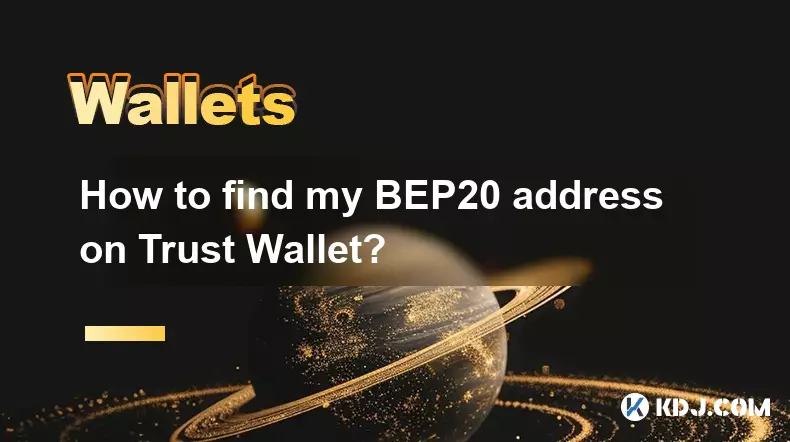
How to find my BEP20 address on Trust Wallet?
Oct 04,2025 at 06:19pm
Understanding BEP20 and Trust Wallet Compatibility1. Trust Wallet is a widely used cryptocurrency wallet that supports multiple blockchain networks, i...
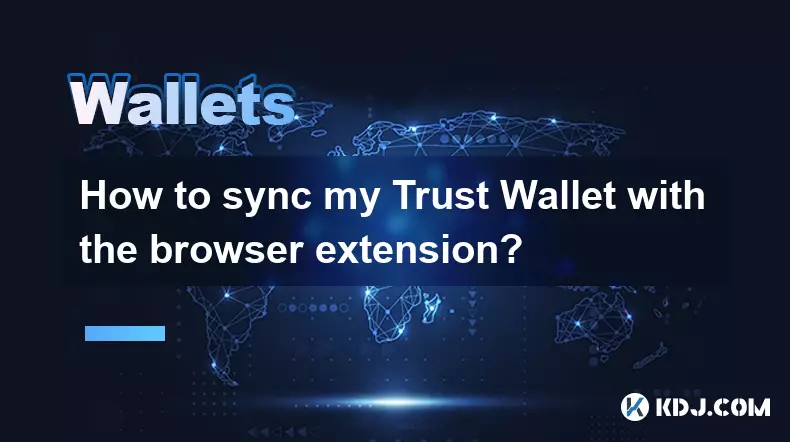
How to sync my Trust Wallet with the browser extension?
Oct 03,2025 at 06:19pm
Understanding Trust Wallet and Browser Extension IntegrationTrust Wallet is a popular non-custodial cryptocurrency wallet that supports a wide range o...
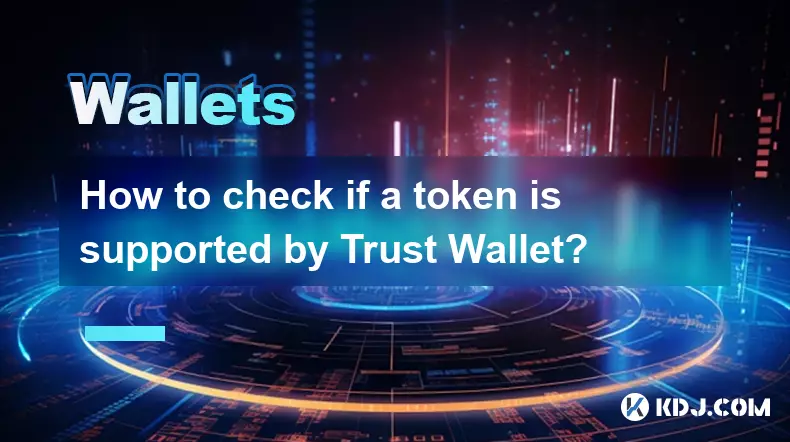
How to check if a token is supported by Trust Wallet?
Oct 04,2025 at 05:18am
Understanding Token Compatibility with Trust Wallet1. Trust Wallet supports a wide range of blockchain networks, including Ethereum, Binance Smart Cha...

How to get the Trust Wallet browser extension?
Oct 01,2025 at 12:37am
How to Access the Trust Wallet Browser Extension1. Visit the official Trust Wallet website through a secure internet connection. Navigate to the downl...

How to interact with a DApp using Trust Wallet?
Oct 02,2025 at 10:00pm
Connecting Trust Wallet to a DApp1. Open the Trust Wallet app on your mobile device and ensure your wallet is unlocked with access to your assets. Nav...
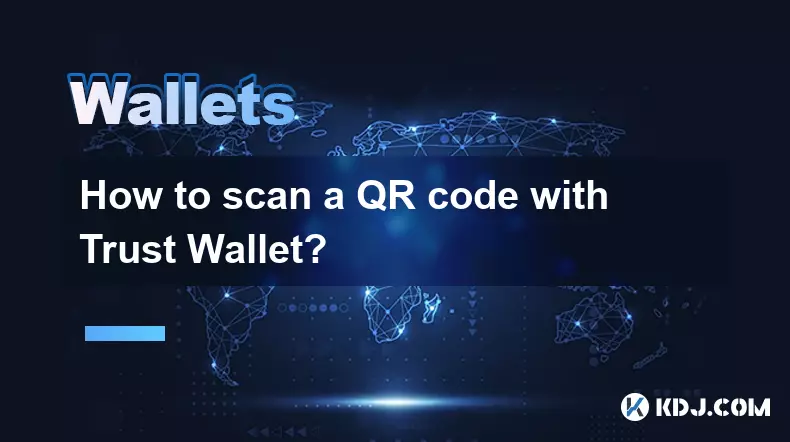
How to scan a QR code with Trust Wallet?
Oct 02,2025 at 03:37pm
Understanding QR Codes in Trust Wallet1. QR codes are widely used in cryptocurrency applications to simplify transaction processes. Trust Wallet lever...

How to find my BEP20 address on Trust Wallet?
Oct 04,2025 at 06:19pm
Understanding BEP20 and Trust Wallet Compatibility1. Trust Wallet is a widely used cryptocurrency wallet that supports multiple blockchain networks, i...

How to sync my Trust Wallet with the browser extension?
Oct 03,2025 at 06:19pm
Understanding Trust Wallet and Browser Extension IntegrationTrust Wallet is a popular non-custodial cryptocurrency wallet that supports a wide range o...

How to check if a token is supported by Trust Wallet?
Oct 04,2025 at 05:18am
Understanding Token Compatibility with Trust Wallet1. Trust Wallet supports a wide range of blockchain networks, including Ethereum, Binance Smart Cha...

How to get the Trust Wallet browser extension?
Oct 01,2025 at 12:37am
How to Access the Trust Wallet Browser Extension1. Visit the official Trust Wallet website through a secure internet connection. Navigate to the downl...

How to interact with a DApp using Trust Wallet?
Oct 02,2025 at 10:00pm
Connecting Trust Wallet to a DApp1. Open the Trust Wallet app on your mobile device and ensure your wallet is unlocked with access to your assets. Nav...

How to scan a QR code with Trust Wallet?
Oct 02,2025 at 03:37pm
Understanding QR Codes in Trust Wallet1. QR codes are widely used in cryptocurrency applications to simplify transaction processes. Trust Wallet lever...
See all articles










































































